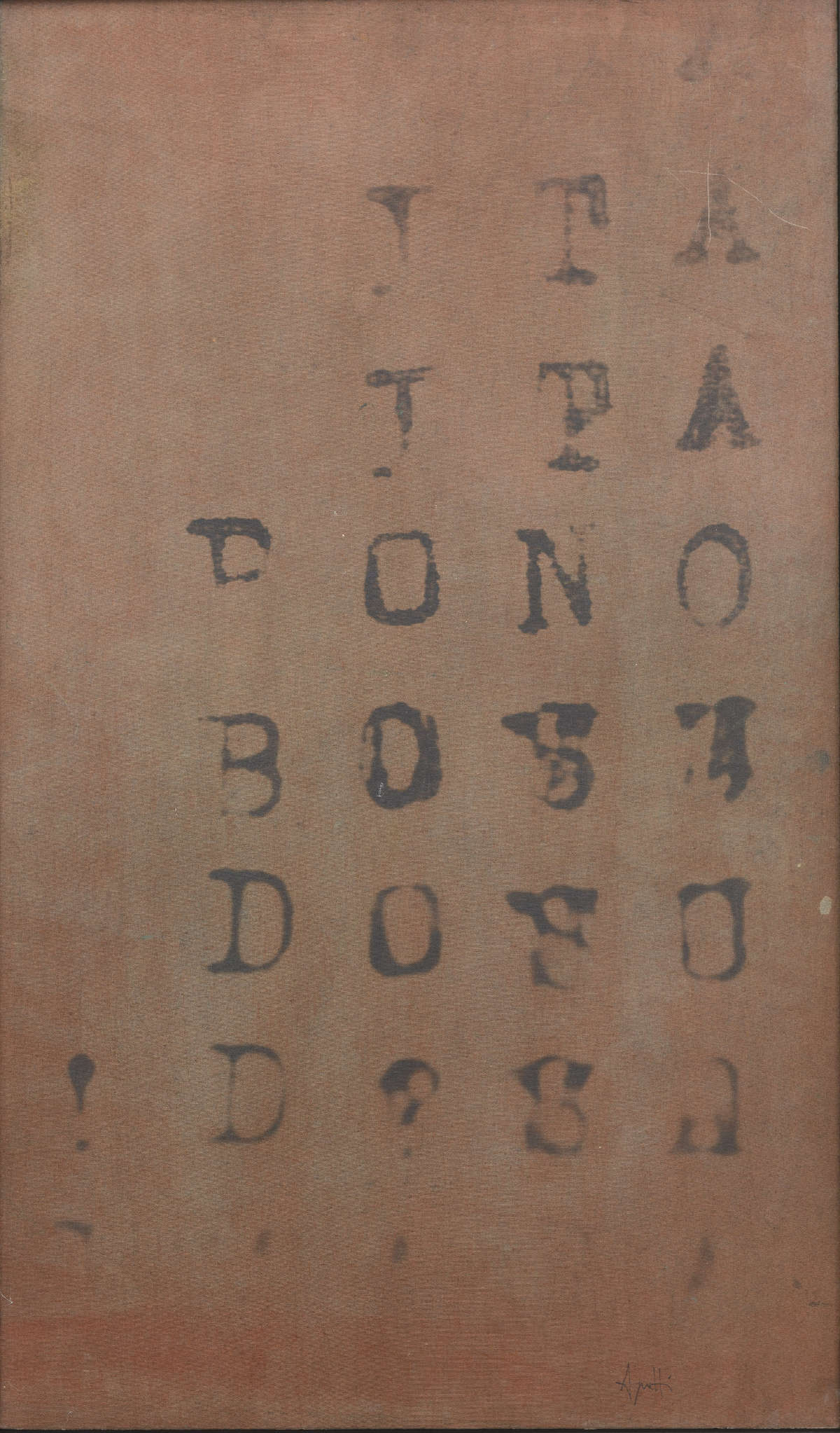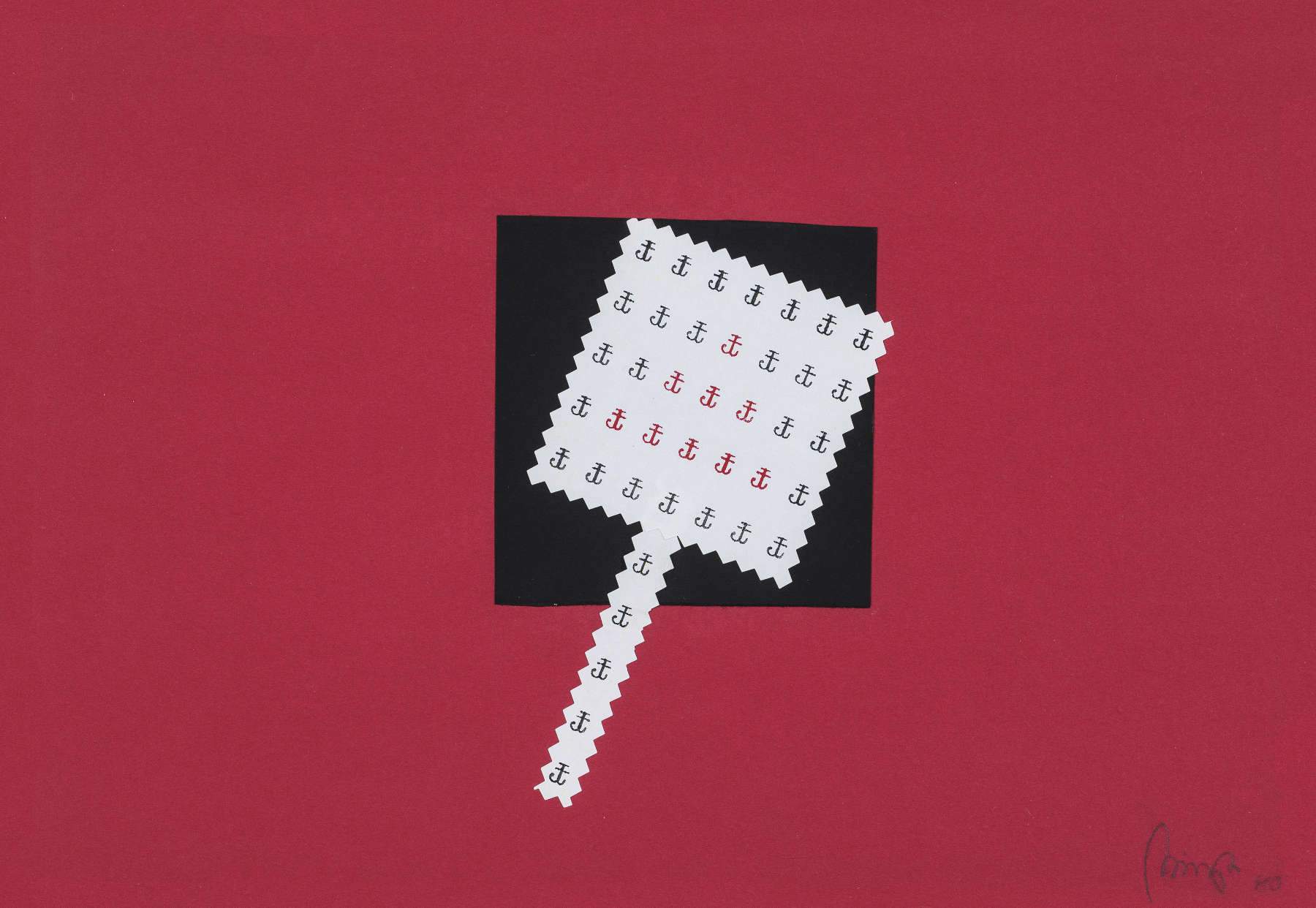Rome, the use of word as medium in the bipersonal exhibition on Vincenzo Agnetti and Tomaso Binga
From March 12 through July 15, 2024, Galleria Erica Ravenna in Rome is hosting a two-person exhibition dedicated to Vincenzo Agnetti and Tomaso Binga entitled Una macchina è una macchina. It is a dialogue between two artists who, since the 1960s, have favored the use of words as an expressive medium for that process of transformation through which thought. About 30 works are intended to focus on the points of contact between the two artists who shared common languages including the use of poetry, performance practices and the conception ofart as a synthesis operation.
In the 1960s and 1970s, experimenting with extra-artistic materials and advanced technologies influenced artistic research: the typewriter, among other tools used, was employed by many artists. The essay The Art of Typewriting, edited by Ruth and Marvin Sackner, includes Tomaso Binga and his Typewriters created with an Olivetti Lettera 32. From an error in typing two keys at once, a sign is generated which in turn, through the artist’s compositional choice, will give rise to a cryptic linguistic code and original images. In 1969, Vincenzo Agnetti exhibited “The Drugged Machine” for the first time in Milan at Cenobio-Visualità. He uses an Olivetti Divisumma 14 calculator, replacing numbers with alphabetical and punctuation marks. The audience interacts with the instrument, creating a collaborative, performative action called “static theater” by Agnetti. The original letter Del teatro statico, which discusses the metalinguistic function of language and its relationship to consumer society, will be on display in the exhibition. The gallery continues the confrontation between Agnetti and Binga, which had already begun with the group show Fare uno, dalla parola al segno and then with the miart 23 project. Through Binga’s Dattilocodici and Agnetti’s Macchina drogata, the exhibition explores how these artists anticipated new technologies, artificial intelligence and new media, showing the relationship between man and machine, which becomes autonomous and “alive.”


Notes on the artists
Tomaso Binga (Salerno 1931), stage name of Bianca Pucciarelli Menna, artist, poet and performer, lives and works in Rome. In 1971 Binga began an artistic and poetic experimentation centered on verbo-visual writing. In the first phase of her career she worked with “desemantized” writing, a seemingly dysfunctional and non-communicative graphic sign, presenting her first exhibition in 1974 at L’Obelisco Gallery in Rome. In 1974 he began his performative actions: the first is Words to Destroy, Words to Keep. In 1976 she will complete a series of works that will remain a cornerstone of her artistic research, such as her “Living Scripture”: letters of the alphabet formed with her own female body and in particular her famous wallpapers. In that year she was invited to participate in the exhibition organized by Mirella Bentivoglio entitled Tra linguaggio e immagine followed by Materializzazione del linguaggio (1978). She continued her activity by participating in numerous exhibitions and cultural initiatives, including the XVI São Paulo Biennale, Brazil (1981) XI Quadriennale di Roma (1986), Fondazione Prada (2017), Frigoriferi milanesi (2019), Museion, Bolzano (2019), Centre d’Art Contemporain, Geneva (2020). Most recently, the 2022 edition of the Venice Biennale. His works are also in Italian and foreign museum collections.
Vincenzo Agnetti (Milan, 1926 - 1981), a graduate of the Brera Academy of Fine Arts, made his debut in the late 1950s, combining painting in the informal sphere with his work as a critic, essayist and theorist. In 1957 he collaborated on ’Azimuth’ and the magazine of the same name with Manzoni, Castellani, Bonalumi, Boriani, Anceschi, and De Vecchi. From 1960 he rejected the practice of painting to identify art with absence, working in an extremely radical, ’cold’, sometimes cryptic conceptual sphere. From 1962 is Obsoleto, with the deletion of the text of the last pages, an operation resumed at the end of the decade in Libro dimenticato a memoria with the total cutting of blocks of text from all pages, and with Pagina dimenticata a memoria in which the writing stands out in negative on the black page. He then works and experiments outside of painting in years of travel until 1967 when, having returned to Italy, he advocates art practice as pure analysis of concepts. His work on the analysis of the object in relation to its physical and mental image and his work on the languages of communication are of fundamental importance. In 1975 Agnetti opened a studio in Manhattan, began collaboration with Ronald Feldman, and formed friendships with other artists, particularly Arakawa. He participated in the Venice Biennials from 1974 to 1978, the Rome Quadrennial, documenta 5 in 1972 and the S. Paolo Biennial in 1973.
 |
| Rome, the use of word as medium in the bipersonal exhibition on Vincenzo Agnetti and Tomaso Binga |
Warning: the translation into English of the original Italian article was created using automatic tools. We undertake to review all articles, but we do not guarantee the total absence of inaccuracies in the translation due to the program. You can find the original by clicking on the ITA button. If you find any mistake,please contact us.



























